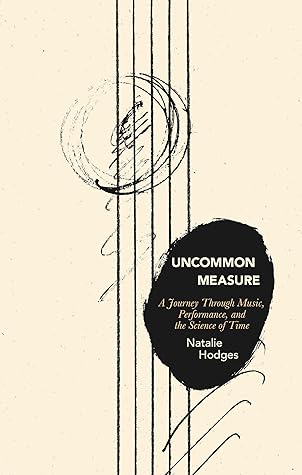More on this book
Community
Kindle Notes & Highlights
Read between
May 20 - June 5, 2025
In the act of recording, writing, remembering, we chart our stories onto a particular path—one way, perhaps, that from our limited human perspective we can come to terms with the infinity of past paths not taken. Writing thus distorts our sense of our own time, but it also orients us in it and helps us give it meaning.
If you want to change the past, it seems, perhaps all you have to do is write it.
Music sculpts time. Indeed, it is a structuring of time, as a layered arrangement of audible temporal events. Rhythm is at the heart of that arrangement, on every scale: the cycling and patterning of repeated sound or movement and the “measured flow” that that repetition creates.
Yet pattern is pattern, and the music of all cultures, each with its own unique rules to be followed and broken, both weaves and rends the tapestry of audible time. Our experience of musical temporality, like our experience of the day-to-day, consists of patterns of recurrence and, sooner or later, their violation.
entrainment, the ability to synchronize the body’s movements with a beat, “a perceived periodic pulse that listeners use to guide their movements and performers use to coordinate their actions.”
In other words, humans don’t just hear beats—we feel beats, internalizing them in our bodies and using our bodies to express their time.
In music, you have to suspend your ego, arrest the rhythms of its constant self-conscious chatter and cede them to the music’s time—although of course it is the ego that is performing, that is indeed crucial to the idea of performance itself. You have to relinquish all thought of who’s looking at you, of how hard you’ve worked, even of how well you want the performance to go, in order to become the music, immerse yourself fully in the music’s time. You have to take yourself out of one time in order to fully command the next.
The uncanny ability to entrain one’s own body to a beat translates into the equally uncanny ability to sync one’s movement with the movement of others. The study suggests that a cross-cultural or “universal” purpose of music was to synchronize group actions, because a bonded, cooperative group—on the hunt or on the move, learning to fight and gather and build in tandem—was more likely to outcompete a discombobulated one.
Improvisation, then, can be seen as an uncanny manifestation of deep memory itself: the creation of order out of disorder, a deep up-pouring from some dormant part of the soul; a confirmation that “the mind knows things it does not know it knows.”
The drug of improvisation, like drugs of altered consciousness, seems to open up associative pathways along which the self is given permission to disintegrate, to give in to the pull of disorder and its accompanying freedoms.


